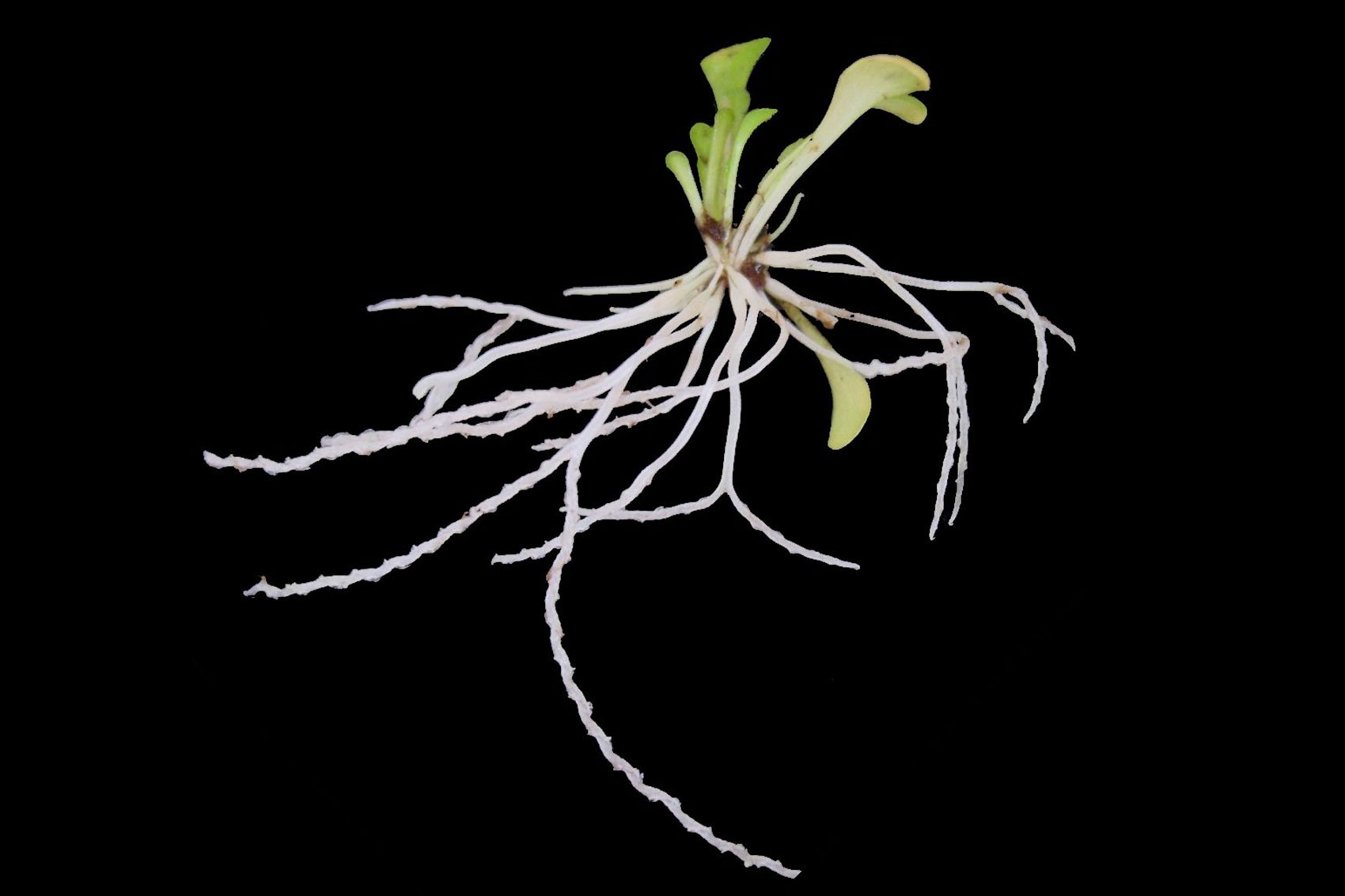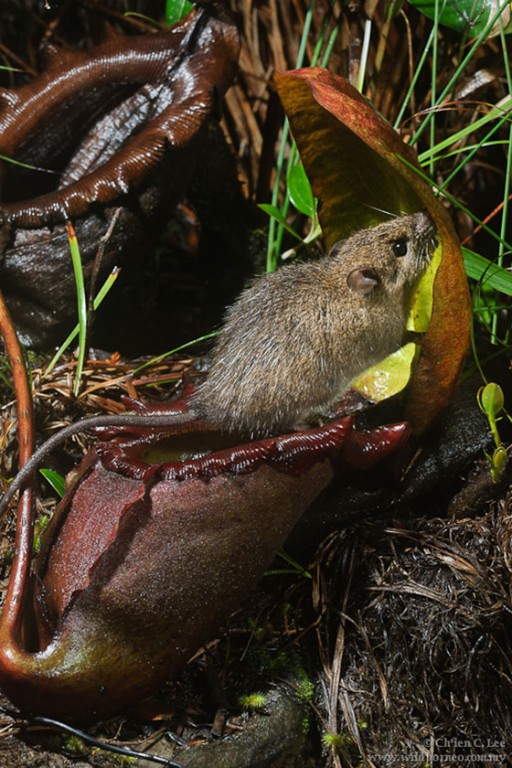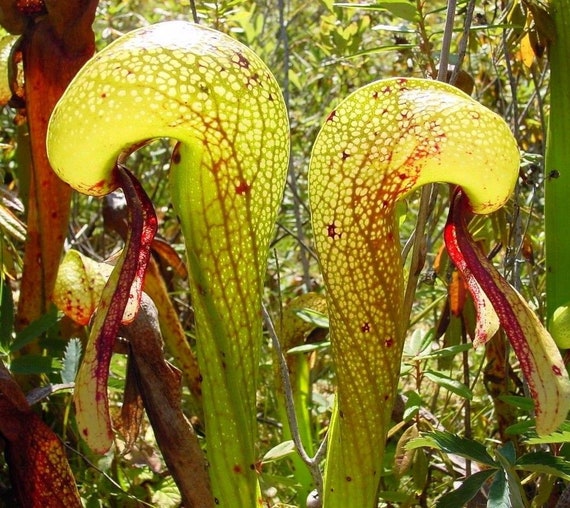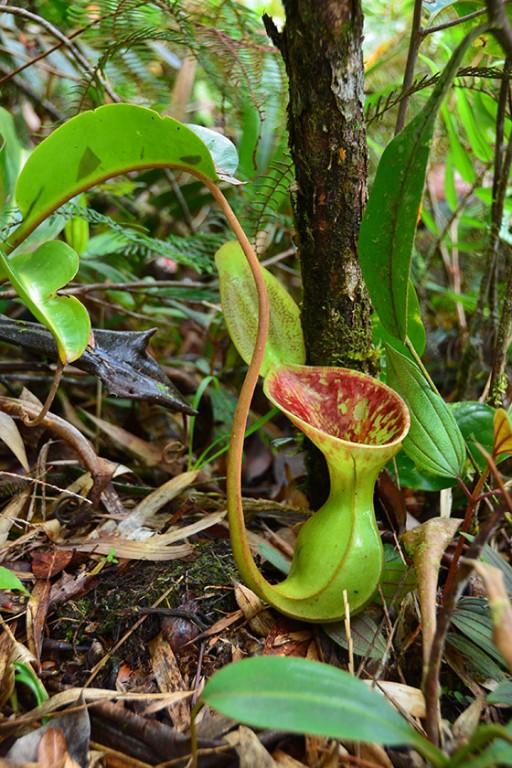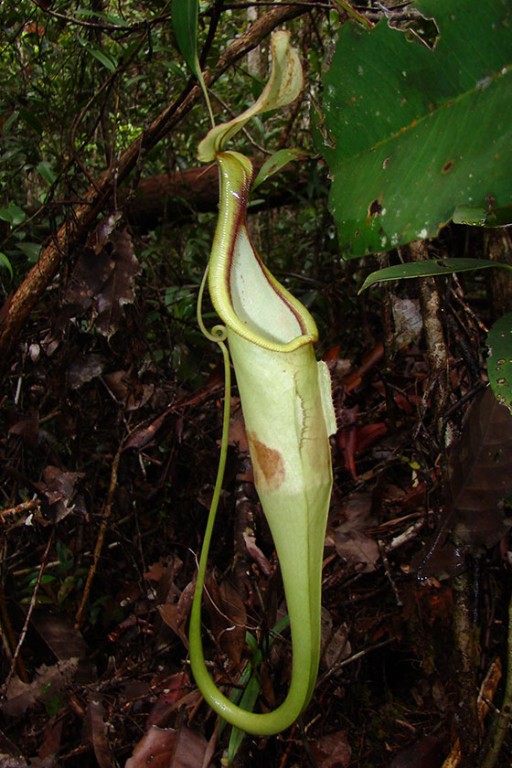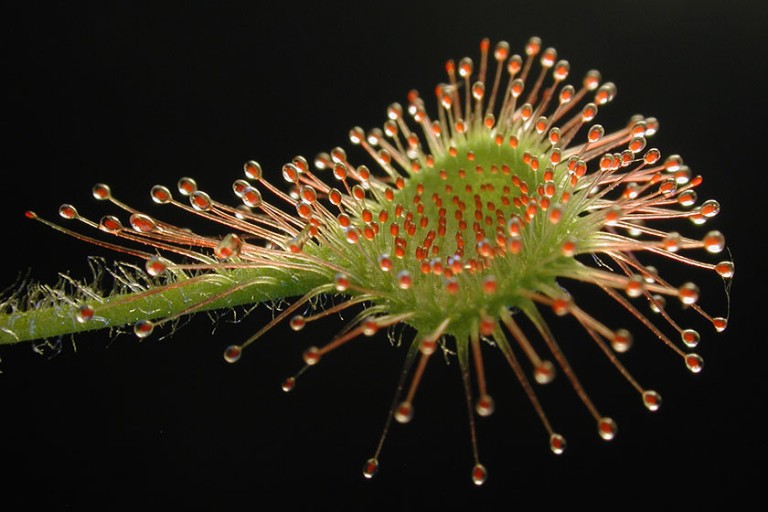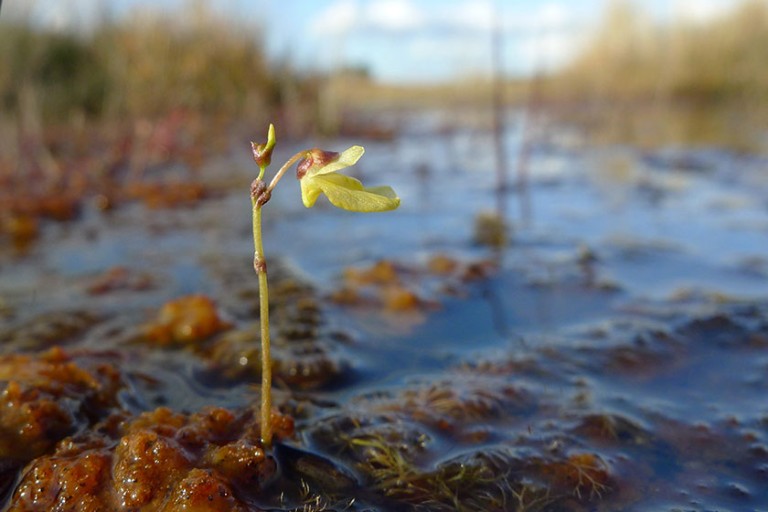Let’s learn about plants that eat meat
Carnivorous plants have evolved a wide variety of peculiar and amazing adaptations that enable them to thrive in nutrient-deficient environments.
If you dare, enter the world of predatory plants to learn about their creative array of traps and sticky ploys.
Animals are drawn to, captured by, and consumed by carnivorous plants for their nutrients. Currently, science is aware of 630 different species of carnivorous plants.
The majority of meat eating plants eat insects, but larger plants can also break down small mammals and reptiles. Aquatic examples of carnivorous plants also consume crustaceans, mosquito larvae, and small fish. Smaller carnivorous plants specialize in single-celled organisms (such as bacteria and protozoa).
Because carnivory is such a successful adaptation, it has repeatedly independently evolved in different plant families.
Carnivory doesn’t replace the need for photosynthesis and root systems, though it’s great for nutrient top-ups. Simply put, being carnivorous aids plants in utilizing all resources to their fullest potential.
Where do carnivorous plants live?
Carnivorous plants have a variety of habitats (then other plants) , but most of them are wet, low-nutrient areas like bogs, swamps, waterbodies, watercourses, forests, and sandy or rocky sites. Every continent, with the exception of Antarctica, is home to carnivorous plants. Many of these species, such as sundews, butterworts, and bladderworts, are native to the UK.
The scale of the tropical pitcher plant, genus Nepenthes, is what most sets it apart from other carnivorous plants. Its “pitchers” can grow to be over a foot tall, making them perfect for catching and digesting small lizards, amphibians, and even mammals in addition to insects. The plant’s sweet-smelling nectar draws the doomed animals, and once they enter the pitcher, digestion can take up to two months. About 150 Nepenthes species, which are indigenous to Madagascar, Southeast Asia, and Australia, are dispersed throughout the eastern hemisphere. Some of these plants’ pitchers, also known as “monkey cups,” are utilized by monkeys as drinking vessels (which are too large to find themselves on the wrong end of the food chain).
Cobra Lily
The cobra lily, Darlingtonia californica, is a rare plant that is indigenous to the cold-water bogs of Oregon and northern California. It is so named because it resembles a cobra snake about to strike. This plant is truly cunning; in addition to luring insects with its sweet scent, it also has numerous see-through false “exits” in its closed pitchers that wear out its desperate victims as they attempt to flee. Oddly enough, naturalists have yet to pinpoint the cobra lily’s natural pollinator. It is obvious that some kind of insect collects the pollen from this flower and survives to see another day, but it is unknown exactly which.
The cobra plant (Darlingtonia californica), a native of swamps in mountainous areas of the USA, has hooded, tubular leaves that resemble a menacing cobra. It is the only species in its genus that depends on bacteria to break down its prey instead of producing its own digestive enzymes.
How do carnivorous plants attract their prey?
Carnivorous plants come in hundreds of species, each with a special adaptation, but they can be divided into five groups based on how they trap prey: pitfall, adhesive, snap, snare, and suction.
Pitfall traps
Pitfall-type traps have the shape of a pitcher or are formed by a single leaf or rosettes. The nectar at the edge of the pitcher attracts prey. Prey loses its footing and falls into the base, which is filled with digestive fluid, due to a slick substance at the rim.
Giant montane pitcher plant
The largest carnivorous plant in the world is the giant montane pitcher plant (Nepenthes rajah), which is native to Borneo. Its urn-shaped traps can reach a height of 41 centimeters and have a pitcher that can hold 3.5 liters of water. In their digestive fluid, scientists have found vertebrates and small mammals.
Venus flytrap
As Tyrannosaurus rex is to dinosaurs, the Venus flytrap (Dionaea muscipula) is to other carnivorous plants: perhaps not the biggest, but unquestionably the most well-known representative of its kind. Contrary to what you may have seen in the movies, the Venus flytrap is a tiny plant with sticky, eyelid-like “traps” that measure only about an inch long (the plant as a whole is no longer than half a foot).
Additionally, it is indigenous to the subtropical wetlands of North and South Carolina. A fascinating fact about the Venus flytrap is that it only closes its traps if an insect touches two different interior hairs within a 20-second period in order to reduce false alarms caused by falling leaves and other debris.
Trigger Plant
It’s unclear whether the trigger plant (genus Stylidium), despite its belligerent name, is actually a carnivore or is merely trying to defend itself from bothersome insects. The leaves of some trigger plant species secrete digestive enzymes that gradually disintegrate their unfortunate prey, while others have “trichomes,” or sticky hairs, that trap small insects unrelated to pollination. We don’t yet know, however, whether trigger plants actually obtain any nutrition from their tiny, wriggling prey or are merely getting rid of unwanted guests.
Tropical Pitcher Plants That Eat insects
The scale of the tropical pitcher plant, genus Nepenthes, is what most sets it apart from other carnivorous plants. Its “pitchers” can grow to be over a foot tall, making them perfect for catching and digesting small lizards, amphibians, and even mammals in addition to insects.
The plant’s sweet-smelling nectar draws the doomed animals, and once they enter the pitcher, digestion can take up to two months. About 150 Nepenthes species, which are indigenous to Madagascar, Southeast Asia, and Australia, are dispersed throughout the eastern hemisphere. The pitchers of some of these plants, also known as “monkey cups,” are used as drinking cups by monkeys, who are too big to end up at the bottom of the food chain.
Cobra plant
The cobra plant has an adaptation similar to Sarracenia psittacina and, to a lesser extent, Sarracenia minor: the operculum is balloon-like and almost completely seals the tube opening. Areolae, which are chlorophyll-free patches that allow light to pass through, are scattered throughout this balloon-like chamber. Ants predominate among the insects that enter the chamber through the hole under the balloon. As soon as they are inside, they exhaust themselves trying to get out through these fake entrances and eventually fall into the tube. The “fish tails,” which are outgrowths of the operculum that give the plant its name, increase prey access. Darlingtonia might serve as an illustration of neoteny because some seedling Sarracenia species also have protruding, long opercular outgrowths.
Waterwheel plant
The only underwater snap trap carnivore is an aquatic plant called the waterwheel plant (Aldrovanda vesiculosa). Around the world, waterwheel plants thrive in nutrient-deficient freshwater swamps. Their minuscule traps, which can reach a length of one centimeter, are used to catch prey such as mosquito larvae, tiny fish, and tadpoles.
Corkscrew plant
Genlisea violacea, the corkscrew plant, is indigenous to South America and bears tiny, purple blossoms. The underground traps can be seen spiraling in the image above. The plant’s equivalent of tiny hairs inside forces prey into its stomach.
Pitfall traps
A single leaf or rosettes can create tubular or pitcher-shaped traps, which are known as pitfall-type traps. The nectar at the pitcher’s rim attracts prey. Prey loses balance and falls into the digestive fluid-filled base due to a slick surface at the rim.
Giant montane pitcher plant
The largest carnivorous plant in the world is the giant montane pitcher plant (Nepenthes rajah), which is native to Borneo. Its urn-shaped traps can reach a height of 41 centimeters and have a pitcher that can hold 3.5 liters of water. In their digestive fluid, scientists have found vertebrates and small mammals.
Rattus baluensis, known as the summit rat, feeding from the pitcher plant’s large lid.
The largest carnivorous plant in the world is the giant montane pitcher plant (Nepenthes rajah), which is native to Borneo. Its urn-shaped traps can reach a height of 41 centimeters and have a pitcher that can hold 3.5 liters of water. In their digestive fluid, scientists have found vertebrates and small mammals.
Cobra plant
The underside of a cobra plant’s hooded leaves. The cobra plant (Darlingtonia californica), a native of swamps in mountainous areas of the USA, has hooded, tubular leaves that resemble a menacing cobra. It is the only species in its genus that depends on bacteria to break down its prey instead of producing its own digestive enzymes.
Unusual Partnerships
Nepenthes iowii, also known as Low’s pitcher plant, gathers nutrients differently than most carnivorous plants. Its large, sturdy pitchers in the shape of toilet bowls are the perfect size for a tree shrew to stand atop and consume the nectar from the top. Shrews deliver helpful, already-digested nutrients directly into the pitcher while feeding. In Borneo, Low’s pitcher plants are restricted to a few mountain slopes.
A fascinating partnership exists between woolly bats and the bat pitcher plant (Nepenthes hemsleyana). It provides a convenient roosting location as opposed to producing nectar. In addition to an enlarged opening that reflects their ultrasound calls through Borneo’s dense vegetation, its pitchers have a prominent ridge that bats can cling to. The plant gets all the nutrient-rich bat guano (feces) it needs in exchange.
Adhesive traps
Sticky, sweet droplets that resemble nectar or dewdrops are used in adhesive traps to entice insects and other small prey. Small insects are immobilized by the slimy substance, and larger victims may struggle to escape and further cover themselves in the mucilage. Death is typically indirect and results from suffocation.
Some types of sticky traps actively encircle struggling victims with their sticky tentacles.
Charles Darwin shocked the scientific establishment in 1875 when he published a 400-page monograph on carnivorous plants. In Sussex’s heaths, he discovered a large population of round-leaved sundews and carefully examined them.
Before describing their digestive systems and demonstrating unequivocally and for the first time that carnivory exists in the plant world, Darwin fed sundew plants ammonia salts, egg white, and even tiny bits of cheese.
Snap traps
Some carnivorous plants (meat eating plants) use modified leaf blades as snap-closing traps to capture their prey.
The insect or small reptile that enters the trap after being attracted by the promise of a flower triggers sensitive trigger hairs. They do this by releasing an electrophysiological impulse that causes the leaf blades to close and trap the visitor. The leaf releases a digestive fluid to resorb the animal protein once a meal has been secured.
Venus flytrap
Venus flytrap (Dionaea muscipula) in close-up with trigger hairs. The subtropical wetlands of the US east coast are the natural habitat of venus flytraps. They have the potential to get big enough to trap small lizards.
Suction traps
Many aquatic carnivorous plants have suction traps as a distinguishing trait. Prey animals are drawn to lures that resemble food or shelter at the trap entrance. A valve trapdoor opens into a hollow bladder when a prey approaches the trap entrance, creating suction that flushes the prey inside. The entrance is then sealed with slime to prevent escape, and the trapdoor quickly swings shut.
Aquatic bladderworts pitcher plants
A group of transparent bladder traps on an aquatic bladderwort (Utricularia vulgaris) specimen from the UK. Aquatic bladderworts have shoots that resemble algal filaments, which draw small crustaceans that feed on them.
How to Grow Carnivorous Plant
- The secret is to cultivate insect-eating plants in bog gardens with damp feet but dry ankles. If they are kept too wet at the surface, pitcher plants, Venus flytraps, and the majority of carnivorous plants are simple to kill.
- 100% peat moss is ideal for growing carnivorous plants in containers, which is how we do it at the nursery.
- Fertilize your carnivorous plant sparingly. For plants that consume insects, irrigation with tap water—which frequently contains high salt concentrations—can be problematic. We use recycled rainwater or well water.
- Insect-eating carnivorous plants require little maintenance aside from removing the dead foliage, making them ideal for low-maintenance gardeners.
Check out our online catalog of unusual bog plants and carnivorous plants for sale here at Plant Delights Nursery when you’re prepared to purchase carnivorous plants for your garden. And if you do decide to purchase a carnivorous plant, please do so from a reputable nursery (like us) that only sells plants that were grown in a way that does not endanger the last remaining native habitats of these endangered beauties.
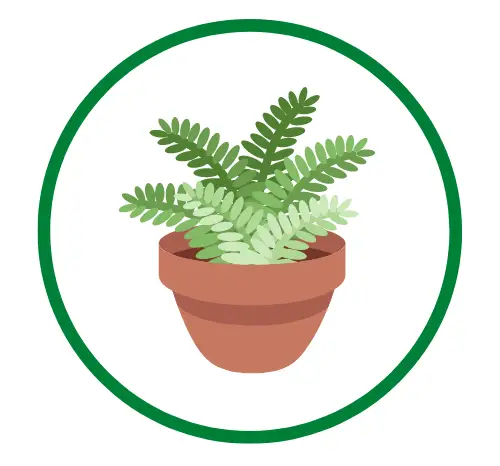
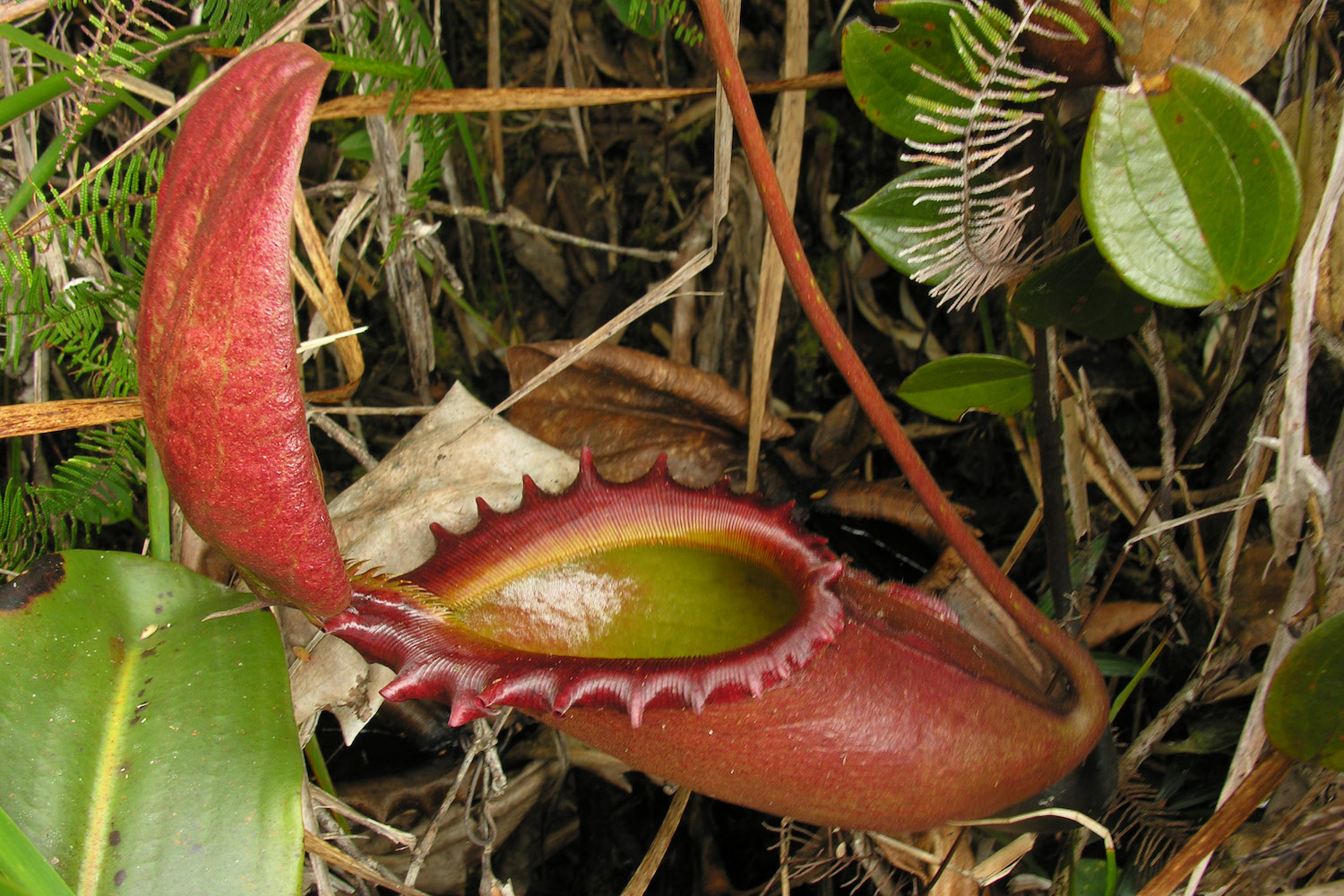
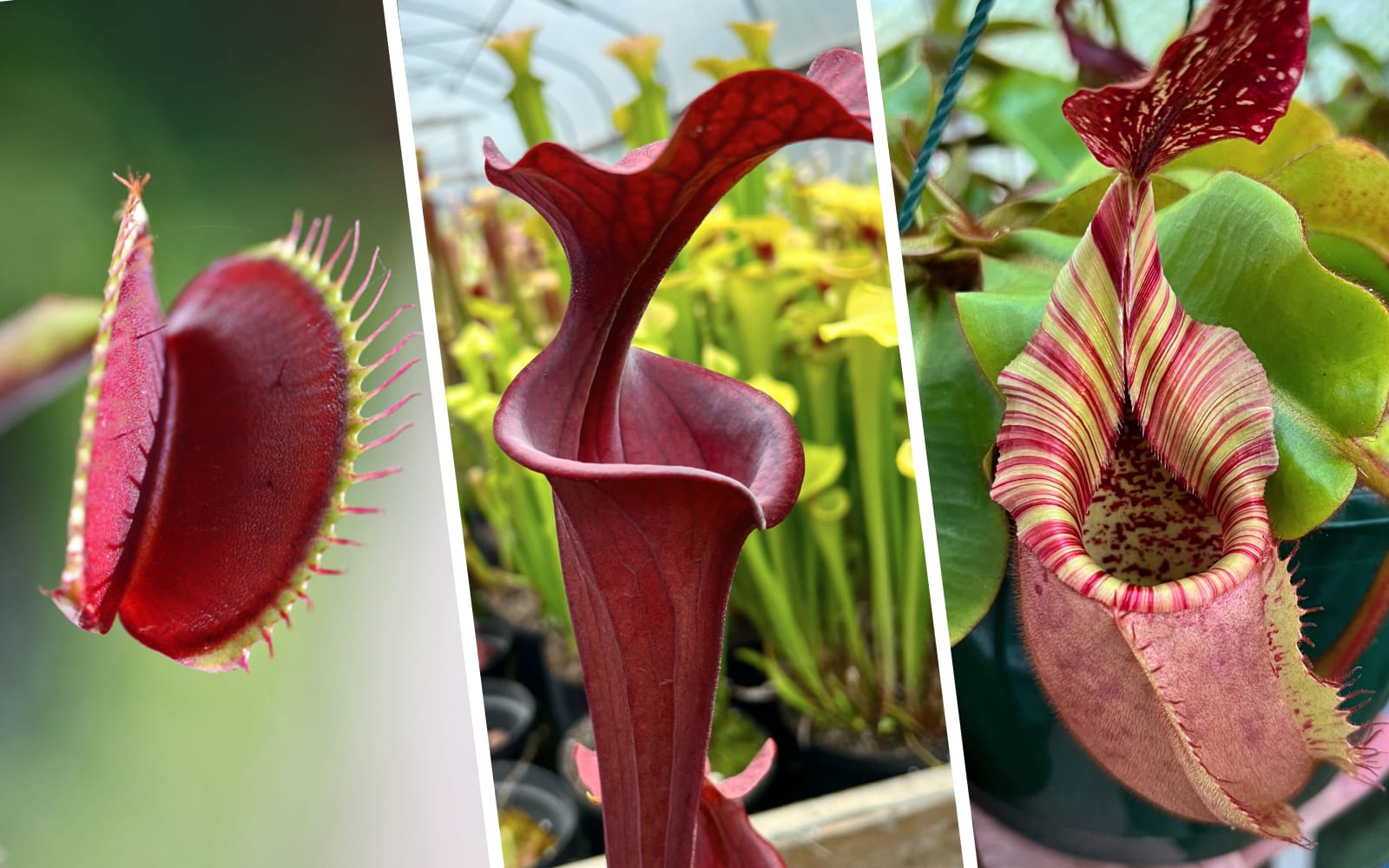

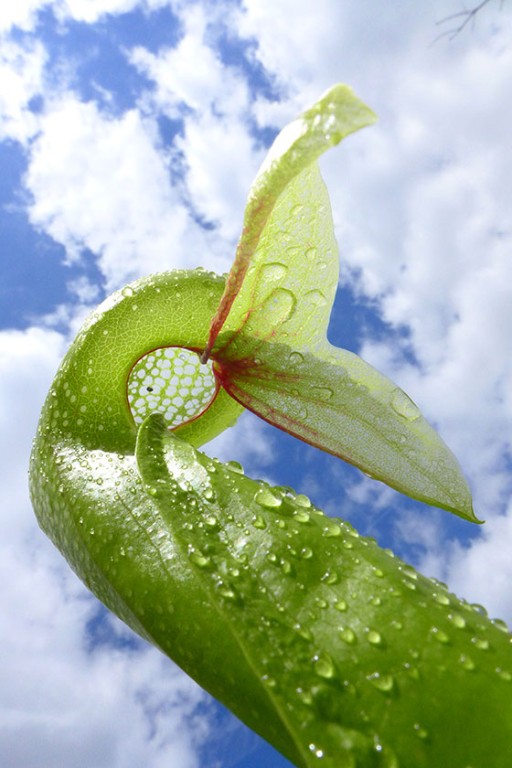
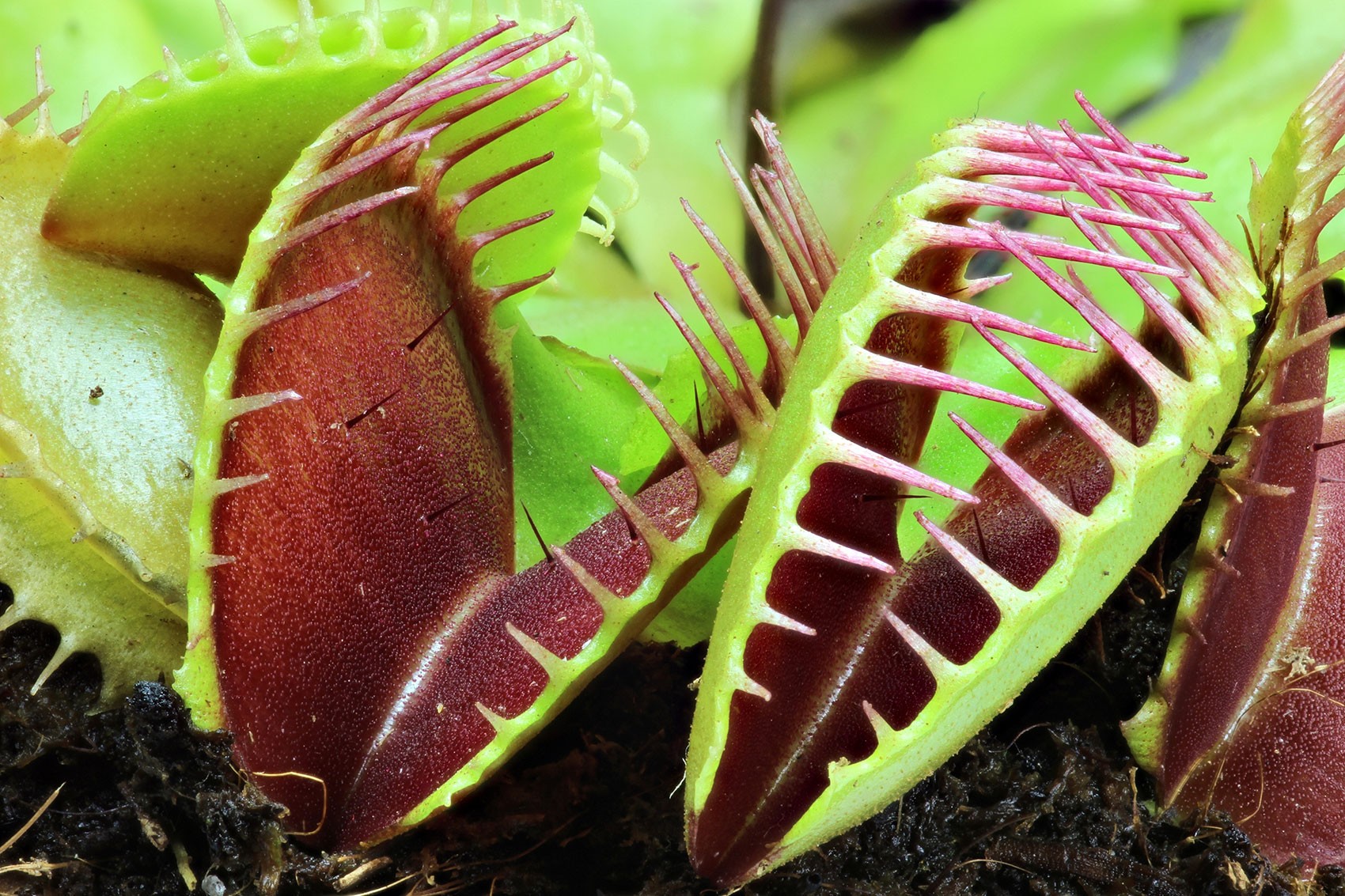
:max_bytes(150000):strip_icc():format(webp)/GettyImages-139803823-d6325df811e14d538acc4c5eb303275b.jpg)
:max_bytes(150000):strip_icc():format(webp)/GettyImages-1072387354-3a78e525f52a448d9171b9390fed9015.jpg)

